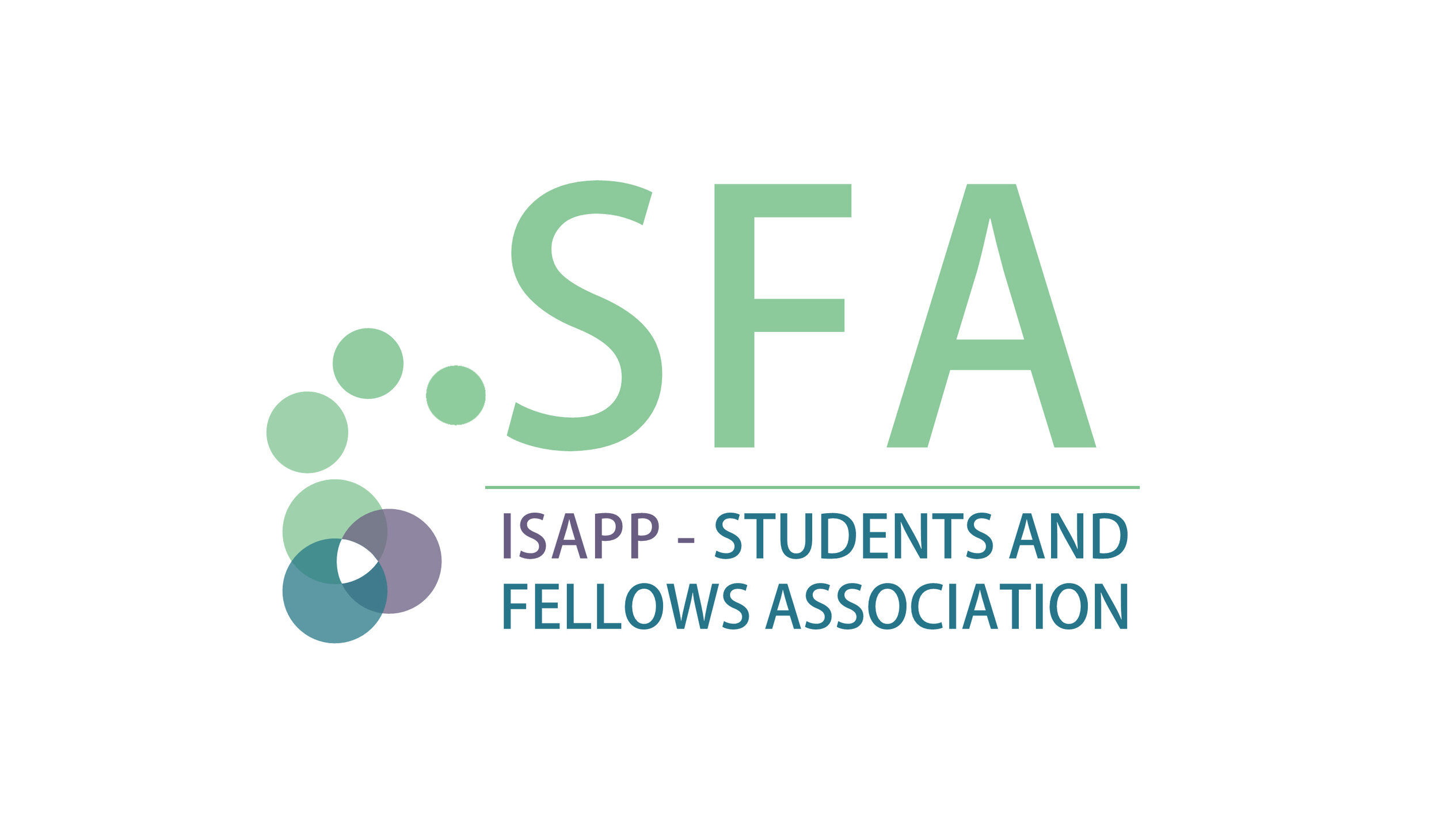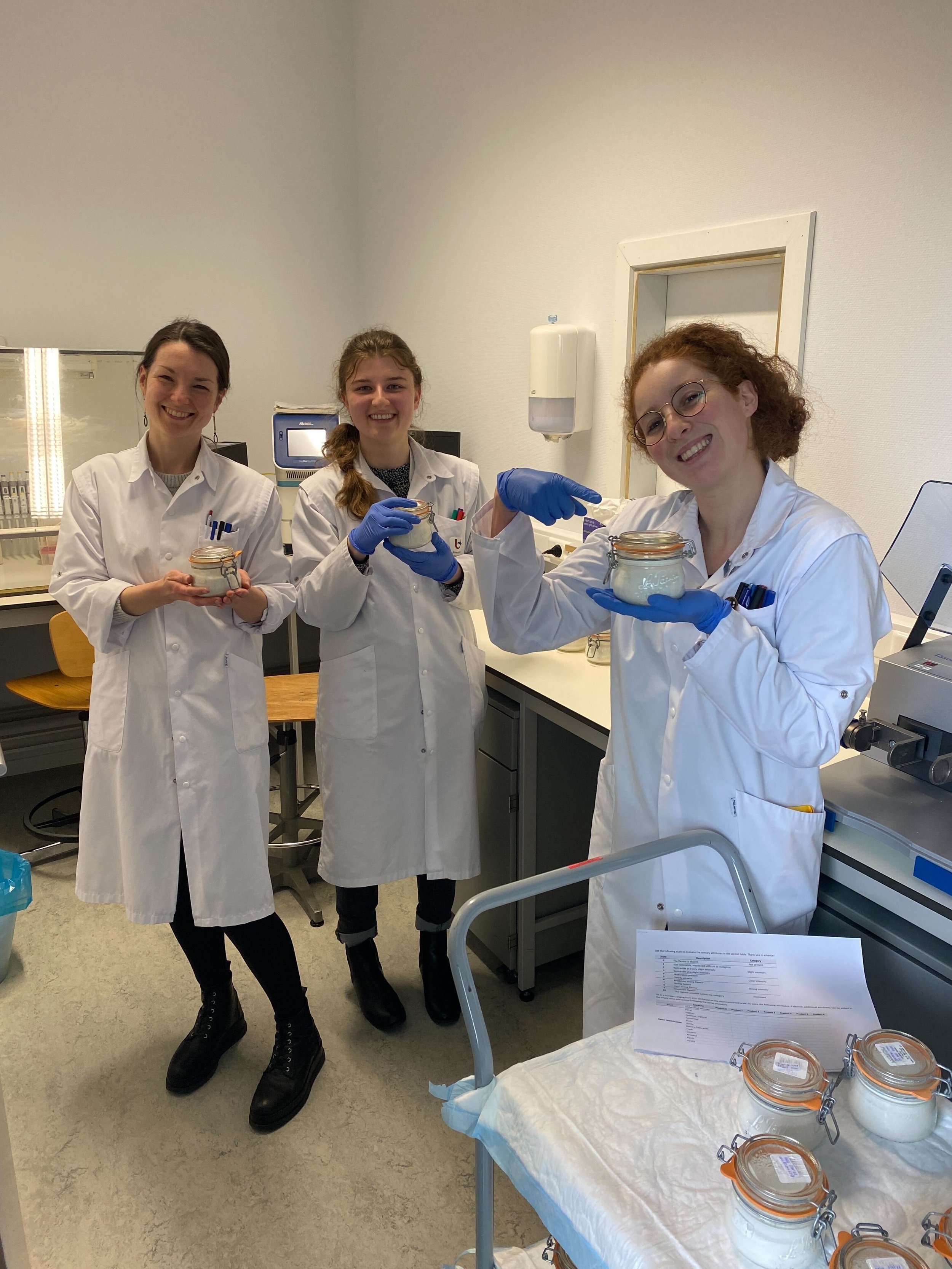Riboflavin over-producing lactobacilli in our vagina
By: Sarah Ahannach, PhD Student
“What if our vaginas are like galaxies full of shiny bacteria?” This was one of the many unexpected questions that I came up with while screening vaginal lactobacilli from our large-scale citizen science project Isala. One of these isolates, Limosilactobacillus reuteri AMBV339, had a remarkable yellow-green fluorescent phenotype. I vividly remember dropping everything (no test tubes were harmed) and running into our postdoc Irina Spacova’s office to tell her about this crazy finding.
Photo 1 - Limosilactobacillus reuteri AMBV339 overnight grown in MRS.
We could not believe our eyes, because this was the first natural vaginal isolate displaying bright fluorescence out of more than 2000 vaginal bacteria in our biobank. Brainstorming with our research team of Prof. Sarah Lebeer (University of Antwerp, Belgium) and rigorous lab testing with collaborators followed, and we were very excited to figure out that AMBV339 overproduced vitamin B2, also called riboflavin. In fact, HPLC-UV analyses demonstrated that L. reuteri AMBV339 produces up to 6x more of this fluorescent compound than natural riboflavin-producing lactobacilli isolates described in literature. Riboflavin is a water-soluble vitamin with several key functionalities required for adequate energy levels, healthy reproductive function, lactation, and successful pregnancy outcomes in humans as advised by the EFSA Panel on Dietetic Products and Nutrition and Allergies.
“We could not believe our eyes, because this was the first natural vaginal isolate displaying bright fluorescence out of more than 2000 vaginal bacteria in our biobank.”
As bioscience engineers, we immediately wanted to know whether we could apply AMBV339 to benefit human health. AMBV339 could potentially cover the human Recommended Dietary Intake (RDI) of riboflavin in just one glass of fermented drink. Since riboflavin deficiency has a large impact on women’s health in both developed and developing countries, efficient use of riboflavin sources such as functional foods and nutraceuticals enriched with riboflavin should be considered. Riboflavin-producing lactobacilli form a promising strategy that can benefit women through direct riboflavin supplementation and/or the synergistic effects of riboflavin and bacterial benefits already demonstrated for lactobacilli in relation to women’s health.
To this end, we went on to document that our spontaneous riboflavin-overproducing Limosilactobacillus reuteri AMBV339 is a strong food biofortification candidate. Increasing riboflavin content in plant-based alternatives for milk is important since these alternatives gain worldwide popularity, yet they often lack specific vitamins. So we were very happy to find out that the riboflavin production, pH-lowering capacities and biomass production of AMBV339 were especially pronounced in coconut beverage. In addition, lactic acid bacteria also significantly add to the flavor and texture profiles of the fermentation end-products. Moreover, we showed that AMBV339 could inhibit pathogenic growth, typically resulting in longer shelf life. AMV339 was found to survive gastrointestinal tract conditions in an in vitro model, so that the vitamins are expected to be produced in situ at the target site.
Photo 2 - Me being super professional while taking longitudinal samples during the 72h colon phase of the simulated gastrointestinal dialysis model (GIDM-colon system) at the collaborating lab of Prof. Nina Hermans (University of Antwerp, Belgium).
Photo 3 - Postdoc Irina Spacova, Master thesis student Isabel Erreygers and PhD student Sarah Ahannach (me) during our smell evaluation analysis at the lab of Prof. Sarah Lebeer (University of Antwerp, Belgium).
But would the potential consumer be convinced to try our novel biofortified fermented beverages? To take a first step towards real-life application, we conducted an aroma analysis with enthusiastic volunteers from our lab. So, we made some yoghurts with coconut beverage and semi-skimmed milk using L. reuteri AMBV339 and a typical yoghurt starter (alone or combined conditions). We then asked 13 of our colleagues to come smell our yoghurt jars and fill out an aroma analysis. Here, we luckily discovered several yoghurts that were found delicious by almost all. This also prompted a bunch of marketing brainstorms amongst ourselves. Because what else are you doing during an incubation? 😊 An idea for a slogan: “Enjoy our delicious vitamin B2-loaded yogurt that will make you shine inside and out!”
Taken together, our data suggests that L. reuteri AMBV339 represents a promising candidate (Patent application number EP20210606.8) to provide riboflavin fortification of plant-based and dairy foods, and has a high application potential in humans. But the proof of the pudding is in the eating 😊. I’m ultimately looking forward to large-scale clinical intervention studies in humans with an integrated approach that combines microbiome, multi-omics and immunological readouts (both locally and systemically), and compares administration formulations, dosages and routes. It’s just so exciting how this cool strain (and/or others) carries vast potential for both industrial and home fermentations in developed and developing countries (cfr. Yoba4Life), because it is a natural strain that is easy to use. Overall, leveraging riboflavin and riboflavin-producing lactobacilli holds promising ventures.
For fancy figures and cool analyses, check out our latest publication:
Spacova I*, Ahannach S*, Breynaert A, Erreygers I, Wittouck S, Bron PA, Van Beeck W, Eilers T, Alloul A, Blansaer N, Vlaeminck SE, Hermans N and Lebeer S (2022) Spontaneous Riboflavin-Overproducing Limosilactobacillus reuteri for Biofortification of Fermented Foods. Front. Nutr. 9:916607. doi: 10.3389/fnut.2022.916607



